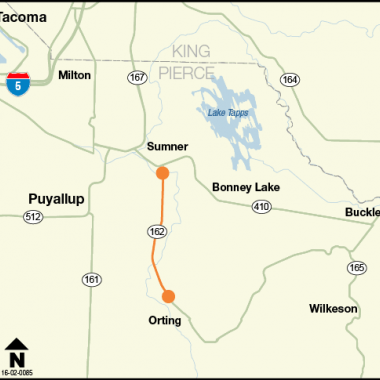The study produced ranked short-, mid- and long-term strategies addressing the corridor needs for the next 20 years. The report provides information to aid in identifying future solutions along SR 162, and advancement of the solutions into project design, right-of-way and construction.
The study began in 2016 and was completed a year later.
Spring 2016
Stakeholder communication, community engagement, data collection & analysis
Summer 2016
Travel demand model development, refine options with stakeholder concurrence
Fall 2016
Finalize alternatives, identify strategies, stakeholder acceptance
Spring 2017
Community engagement information session, study report completed, gather report approval, publish report
The study was funded through the Legislative Evaluation & Accountability Program (LEAP) as part of the Connecting Washington Program. A total of $450,000 was allocated for the study.
The study outcomes included five short, mid- and long-term strategies for further development into potential solutions.
- Transportation Demand Management strategies aimed at travel behavior rather than expanding the transportation network to meet travel demand
- Operations (Improvements)/Intelligent Transportation Systems/Incident Management including such elements as active Traffic Management, traffic signal timing/optimization and signal interconnect actions
- Public Transportation Services including elements of transit and rail services
- Park and Ride lots, bicycle and pedestrian facility improvements
- Intersection control and corridor improvements

